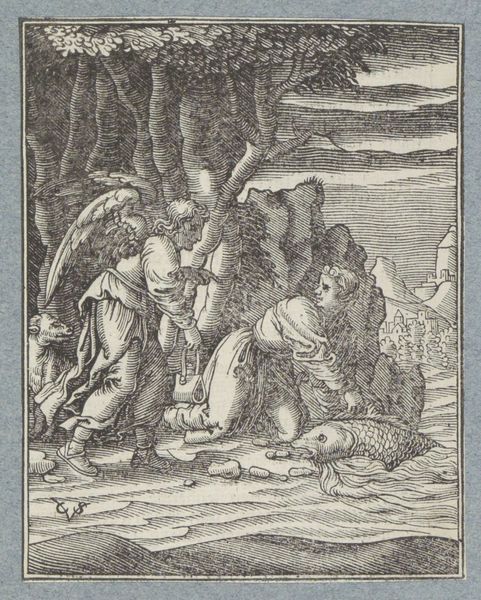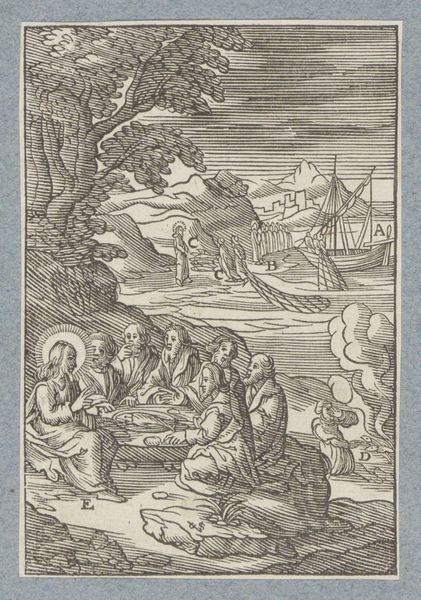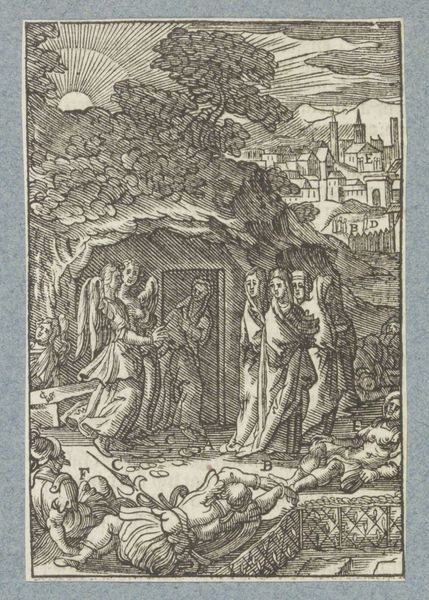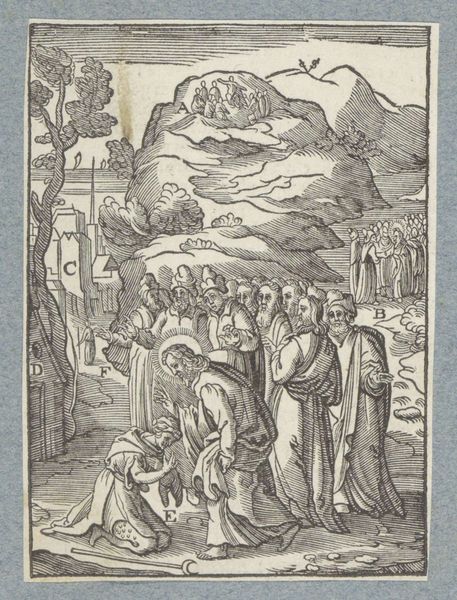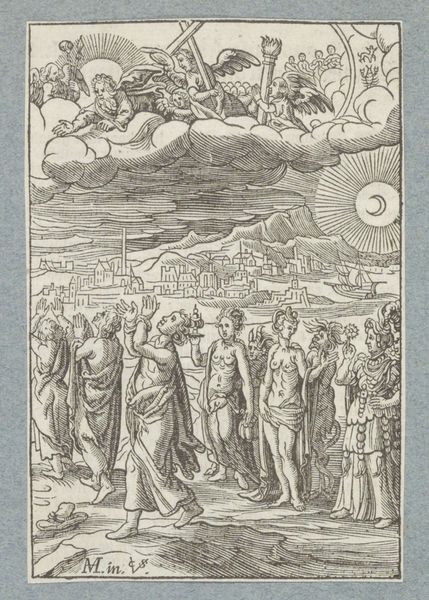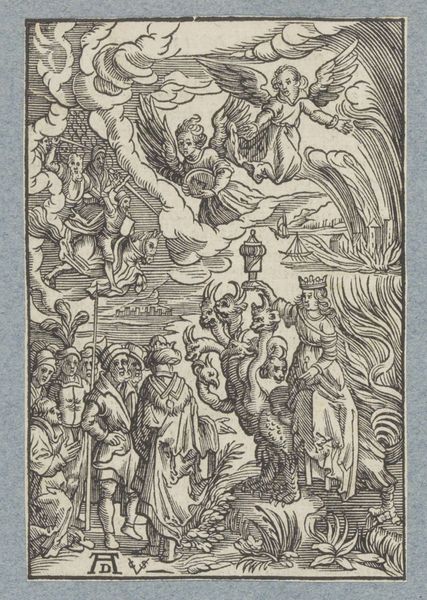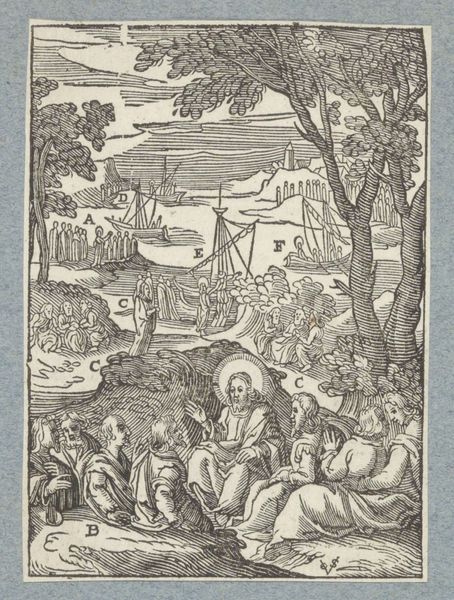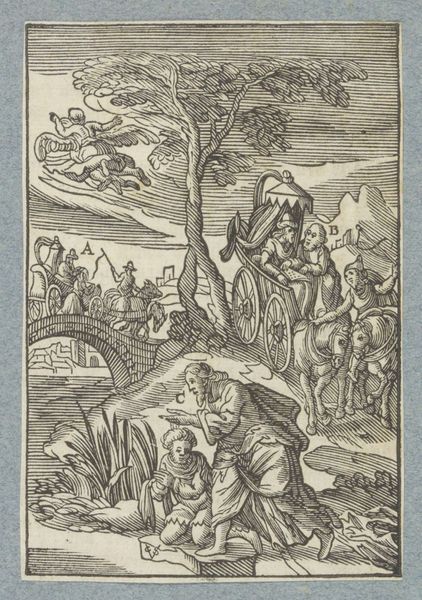
print, engraving
#
comic strip sketch
#
quirky sketch
#
narrative-art
# print
#
pen sketch
#
sketch book
#
figuration
#
personal sketchbook
#
sketchwork
#
pen-ink sketch
#
line
#
sketchbook drawing
#
history-painting
#
storyboard and sketchbook work
#
northern-renaissance
#
sketchbook art
#
engraving
Dimensions: height 107 mm, width 76 mm
Copyright: Rijks Museum: Open Domain
Editor: This is "Verzamelen van het manna" – “Gathering of Manna” – an engraving from around 1645 by Christoffel van Sichem II. The intricate lines create this scene of people gathering what looks like falling bread, a biblical story perhaps? It seems almost chaotic. What do you see when you look at the work? Curator: Observe how the artist has orchestrated a dynamic interplay of line and form. Note the contrasting textures – the smoothness of the sky juxtaposed against the coarse garments of the figures, achieved through varied densities and directions of the engraved lines. Editor: It's interesting how the lines themselves create texture. Does that have something to do with it being an engraving, as opposed to a painting? Curator: Precisely. The very nature of engraving, the act of incising lines into a surface, dictates a reliance on line to convey not just form but also tonal variations and textural effects. Focus on how van Sichem uses hatching and cross-hatching to suggest depth and volume. Can you see where the artist has skillfully manipulated light and shadow through these techniques? Editor: Yes, definitely. In the robes, for example, and around the figures on the left side. Curator: Indeed. Notice also how the composition directs our gaze, from the implied celestial source of the manna downwards towards the figures eagerly collecting it. The artist is not only representing a scene, but also crafting a visual rhythm, almost a calligraphic dance across the surface of the print. The materiality dictates meaning. Editor: I never considered how much the technique could inform the narrative itself. Curator: Paying close attention to those formal qualities really unlocks another level of appreciation, wouldn’t you agree? Editor: Definitely. I'll look at prints in a different way now.
Comments
No comments
Be the first to comment and join the conversation on the ultimate creative platform.

